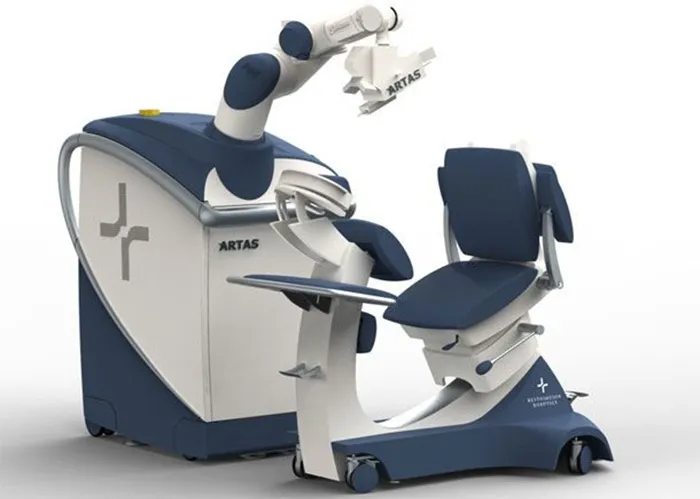Robotic hair transplant systems, like the ARTAS system, have been heralded as revolutionary in the field of hair restoration. They promise precision, consistency, and improved outcomes. However, like any medical technology, robotic hair transplants are not without their drawbacks. Understanding these disadvantages is crucial for patients considering this type of treatment, as well as for medical professionals in the hair restoration industry.
High Cost
Equipment and Technology Expenses
Robotic hair transplant systems are extremely expensive to purchase and maintain. The sophisticated imaging technology, robotic arms, and artificial intelligence algorithms that power these systems require significant investment. Clinics that offer robotic hair transplants need to recoup these costs, which are often passed on to the patients. As a result, robotic hair transplants are generally more expensive than traditional manual hair transplant techniques, such as Follicular Unit Extraction (FUE) or Follicular Unit Transplantation (FUT). For example, a robotic hair transplant may cost anywhere from 30% to 50% more than a comparable manual FUE procedure, putting it out of reach for many patients on a tight budget.
Lack of Flexibility
Inflexibility in Procedure Adaptation
While robotic systems are designed to be precise, they lack the flexibility of human surgeons. Robots operate based on pre – programmed algorithms and cannot adapt to unexpected situations as effectively as a skilled human surgeon. For instance, in cases where the patient’s scalp has an irregular shape, scarring from previous surgeries, or unique hair follicle characteristics, a human surgeon can make real – time adjustments during the extraction and implantation process. A robot, on the other hand, may struggle to deviate from its pre – set parameters, potentially leading to suboptimal results.
Limited Understanding of Aesthetic Goals
Robotic hair transplants may not fully capture the nuances of a patient’s aesthetic goals. Creating a natural – looking hairline and achieving the desired hair density requires an artistic touch and an understanding of facial aesthetics. Human surgeons can assess a patient’s facial features, hair texture, and growth patterns to create a customized hair transplant plan that enhances the patient’s overall appearance. Robots, despite their advanced technology, may not be able to replicate this level of aesthetic judgment.
Technical Glitches and Malfunctions
System Failures
Like any complex technological system, robotic hair transplant systems are prone to technical glitches and malfunctions. A software bug, hardware failure, or connectivity issue could disrupt the procedure mid – way. In such cases, the surgery may need to be halted, which can be stressful for the patient and may also damage the extracted follicles. Additionally, diagnosing and fixing technical issues may require specialized technical support, leading to delays in the treatment process.
Calibration Errors
The accuracy of robotic hair transplant systems depends on proper calibration. If the system is not calibrated correctly, it can result in inaccurate follicle extraction and implantation. This can lead to uneven hair distribution, incorrect implantation angles, and a higher risk of follicle damage, ultimately affecting the success of the hair transplant.
Training and Maintenance Challenges
Specialized Training Requirements
Operating a robotic hair transplant system requires specialized training. Surgeons and medical staff need to be well – versed in the complex technology, including the imaging software, robotic controls, and data analysis tools. This additional training adds to the cost and time investment for clinics. Moreover, if the staff fails to receive proper training, it can compromise the safety and effectiveness of the procedure.
Maintenance and Upkeep
Robotic hair transplant systems require regular maintenance to ensure optimal performance. This includes software updates, hardware inspections, and calibration checks. The need for ongoing maintenance not only adds to the operational costs of the clinic but also requires access to technical support, which may not be readily available in all regions.
Long – Term Effects and Unknowns
Lack of Long – Term Data
Despite the growing popularity of robotic hair transplants, there is a lack of long – term data on the effects of these procedures. It is unclear whether the results achieved with robotic hair transplants will remain stable over an extended period. The long – term impact of repeated robotic hair transplants on the scalp and overall health is also not well – understood.
Potential for Over – Reliance on Technology
There is a risk of over – reliance on robotic technology in hair transplantation. As clinics invest more in robotic systems, there may be a tendency to prioritize the use of robots over the skills and experience of human surgeons. This over – reliance could lead to a decline in the overall quality of hair transplant services if the limitations of robotic technology are not properly recognized.
Conclusion
While robotic hair transplant systems offer certain advantages in terms of precision and consistency, they also come with significant disadvantages. From high costs and lack of flexibility to technical glitches and long – term uncertainties, potential patients and medical professionals must carefully weigh the pros and cons. By understanding these drawbacks, patients can make more informed decisions about whether a robotic hair transplant is the right choice for them.
Related topics:
ARTAS Robotic FUE: Procedure, Benefits & Cost
Cost of Robotic Hair Transplant: A Complete Guide
How to Identify the Best Female Hair Transplant Surgeon?


